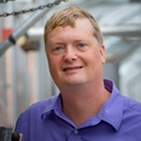Advances in Knowledge of Hydroponic and Aquaponic Systems II
A special issue of Horticulturae (ISSN 2311-7524). This special issue belongs to the section "Protected Culture".
Deadline for manuscript submissions: closed (31 October 2020) | Viewed by 24824
Special Issue Editors
Interests: controlled environment agriculture; recirculating aquaculture systems; entrepreneurship; renewable energy systems
Special Issues, Collections and Topics in MDPI journals
Interests: reducing energy use in CEA; LED lighting; climate control; mineral nutrition; new crops
Special Issues, Collections and Topics in MDPI journals
Interests: aquacultural engineering; coastal bioengineering; biosystem automation and control; novel aquatic species and systems
Special Issues, Collections and Topics in MDPI journals
Special Issue Information
Dear Colleagues,
Hydroponics is a soilless culture of plants in nutrient solution that contains ions of all of the necessary elements for healthy plant growth. Major hydroponic production systems can generally be classified as the nutrient film technique (NFT); deep-water culture (DWC) or raft; and soilless substrates/media beds such as rockwool and coconut slabs, hydroton beads, etc. Hydroponics is an increasingly important field due to its increased nutrient-, water-, and space-use efficiencies and is frequently used commercially in modified- and controlled-environment agriculture to produce high-nutrient-density crops (fruits and vegetables).
Aquaponics combines hydroponics and fish aquaculture. Aquaponic farming is quickly becoming a critical part of the local food production equation. Aquaponics is the combined culture of fish and plants in the same or connected systems, where un-assimilated nutrients in the fish feed provide the nutrients needed by the plants. We must learn to grow more food with less water and grow our food closer to the consumer if we want to create a more sustainable future. Although hydroponics and aquaponics have been practiced for centuries, we are still discovering new techniques and attaining a more complete understanding of how plants function in an aquatic environment and how we can optimize their performance, particularly from an environmental sustainability perspective.
In this Special Issue, we would like to explore new horizons on how to move the hydroponics and aquaponics industries into the future to provide nutritious diets to feed the additional 2.0 billion humans being added to our current population of 7.7 billion by 2050. We also need to understand how our current systems are working. We invite manuscripts that explore any aspect of this research topic, including new technologies and growing strategies, new aquaculture products such as seaweeds or other market-driven products, review papers, and traditional research papers. Topics could include nutrient and physiological plant analyses and mass balances, to financial analysis of enterprise models, and everything in between. We look forward to receiving your manuscript.
Prof. Dr. Michael Timmons
Dr. Neil Mattson
Dr. Steven G. Hall
Guest Editors
Manuscript Submission Information
Manuscripts should be submitted online at www.mdpi.com by registering and logging in to this website. Once you are registered, click here to go to the submission form. Manuscripts can be submitted until the deadline. All submissions that pass pre-check are peer-reviewed. Accepted papers will be published continuously in the journal (as soon as accepted) and will be listed together on the special issue website. Research articles, review articles as well as short communications are invited. For planned papers, a title and short abstract (about 100 words) can be sent to the Editorial Office for announcement on this website.
Submitted manuscripts should not have been published previously, nor be under consideration for publication elsewhere (except conference proceedings papers). All manuscripts are thoroughly refereed through a single-blind peer-review process. A guide for authors and other relevant information for submission of manuscripts is available on the Instructions for Authors page. Horticulturae is an international peer-reviewed open access monthly journal published by MDPI.
Please visit the Instructions for Authors page before submitting a manuscript. The Article Processing Charge (APC) for publication in this open access journal is 2200 CHF (Swiss Francs). Submitted papers should be well formatted and use good English. Authors may use MDPI's English editing service prior to publication or during author revisions.
Keywords
- sustainable
- food security
- systems design
- plant physiology
- water chemistry
- mass balance






